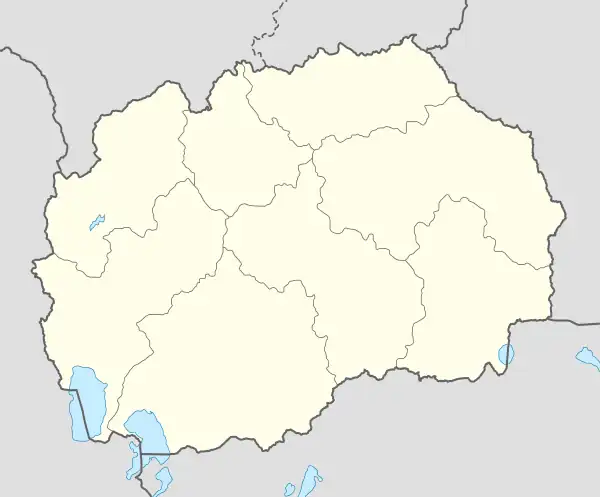| Tetovo Fortress | |
|---|---|
| Tetovo, North Macedonia | |
 | |
 Tetovo Fortress | |
| Coordinates | 42°01′32″N 20°57′21″E / 42.025556°N 20.955833°E |
| Type | Fortress |
| Site information | |
| Open to the public | Yes |
| Site history | |
| Built by | Abdurrahman Pasha |
The Tetovo Fortress (Macedonian: Тетовско кале; Albanian: Kalaja e Tetovës) is a ruined fortress and archaeological site in Tetovo, North Macedonia. Because of its location on a hill called Baltepe, it is also known as Baltepe Fortress. The fortress was built beginning in 1820 under Abdurrahman Pasha, who also reconstructed the Šarena Mosque. On the site previously stood a monastery dedicated to Saint Athanasius. The fortress was built with a guest house, a dungeon, a kitchen, a dining hall, and a fountain. Water did not flow from the fountain, reportedly, until Abdurrahman Pasha was summoned to Constantinople in 1843 on suspicion of treason. After his departure from Tetovo, the fortress fell into ruin.[1] It is believed that three escape tunnels were built from the fortress: one to the city center, one to the upper part of Tetovo, and one to the village of Lavce.[2]
.JPG.webp)
In 1922, a new church dedicated to Saint Athanasius was built on the foundations of the medieval one.[2]
A monument commemorating the National Liberation War, designed by Bogdan Bogdanović, was erected beneath the fortress.[3]
Excavation and restoration work occurred at the fortress from 2008 to 2012, alongside reconstruction of the Church of Saint Athanasius. From 2001 until this reconstruction, the church had been stolen from about five times.[2]
References
- ↑ Afanasiy Selishchev (1929). Полог и его болгарское население. p. 124.
- 1 2 3 Ilčo Cvetanovski (6 May 2010). "На Балтепе се копа во историјата". Time.mk.
- ↑ Nebojša Tomašević (1983). Treasures of Yugoslavia. p. 574.